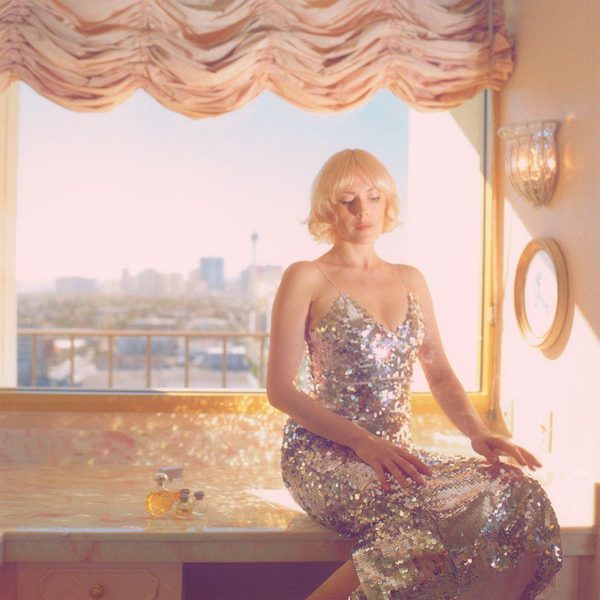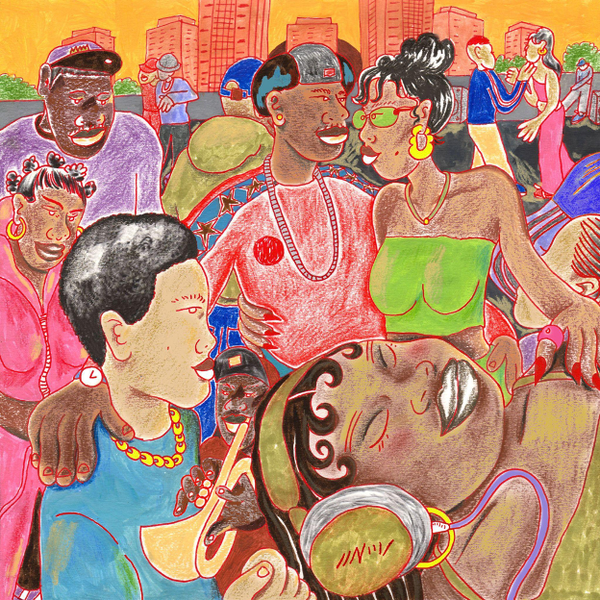The destruction and devotion of John Gorbus
Sophie Leigh Walker travels 5,000 miles to witness the birth of a phenomenon: John Gorbus, the hell-born Idaho noise-punk cult rewriting the rules of chaos and love through madness, mercy, and Pixar Cars stickers.
The world is inhospitable and hell has split wide open. The fault line, it would seem, lies in Boise, Idaho. John Gorbus was born in the undoing of it all; regurgitated from this barely-hidden inferno which has long raged beneath our feet. It was a strange birth in strange times, and this many-headed beast was sticky with the mucus of violence and love. And John Gorbus would not be quiet.
I first learn of John Gorbus through a series of signs. Not necessarily from God – or at least, not in the traditional methods of shapes in clouds or highway billboards across red state America promising that ‘HELL IS REAL’ – but rather, airmail stickers on streetlights in downtown Boise. In a so-fucking-serious scrawl, these messages ranged from directional (“COME KILL JOHN GORBUS AT THE SHREDDER – MARCH 23rd, 3:20pm”) and invitational (“IF YOU ARE AT THE SHREDDER SPIT ON JOHN GORBUS”) to the straightforwardly persuasive (“JOHN GORBUS OWES YOU MONEY”). In nib-crushed pink, another simply promised “BAD MUSIC! BAD MUSIC!”
I didn’t realise it then, but this is what I had travelled almost 5,000 miles for – and for John Gorbus, I would later do it all again a year later. But in that moment, I was a stranger in town and I was here to find interesting things; John Gorbus might be hell-born, but to a writer, they are heaven-sent.
Of all the places in the world, I found myself in the capital of Idaho to cover Treefort Music Fest. Boise is a place you might not imagine leading the charge of new music discovery in the war against algorithmic baby food: a countercultural arts festival with a punk ethos, entirely built and sustained by the community. It rewards blind faith with the sharing of its secrets. Historically struggling against the exodus of emerging artists heading to the promised lands of Seattle and LA, Treefort was born from a desire to prove to the world – and Boise itself – that this is a city worth sticking around for.
The internationally renowned headliners – among them Channel Tres, Ty Segall, Neko Case and CMAT – were beside the point; I wanted what could only exist here and here alone. A shock of blue in an otherwise staunchly red state, Boise seems to magnetise Idaho’s outliers. There’s something about this resistance – stirred with a measure of hometown boredom, its wide-open vistas and cultural trickle-down from the major cities – which has created these remarkable eruptions of creativity that Treefort brings to light. A thriving drag scene, skating community and collectives of writers, filmmakers, musicians and artists all exist shoulder to shoulder.

It's 3.20pm on 23 March 2024 and I do as I’m told. I go to The Shredder and I wait. The Shredder is a punk club in an innocuous car park which just so happens to be Treefort’s best venue. The entrance is crammed with old-school arcade games and pinball machines, which leads to a cavernous two-storey stage area where a coffin is suspended over the pool table. It’s dark, sticky with beer and an animatronic spawned from your worst nightmare holds a screaming baby by the leg. The smoking area also has a skating ramp - should you desire to do both at once, and a sign behind the stage spells out, in a dazzling, bulb-flashing display, ‘FUCK’.
What happens in the next thirty minutes has carved my life into terms of ‘before’ and ‘after’ – and everything ‘after’ has been quite frankly boring in contrast. Seven Boise kids introduce themselves, in turn, as 'John Gorbus'. They are a noise-punk collective and they are an atom bomb; their performance is a musical disembowelment and an emotional blood-let. The frontman is conjured from cartoonish proportions: angular and sharp, bedecked in a two-piece suit with a kitchen-scissor mullet half-red-half-blue. He’s pacing across the stage as if possessed, screaming into a microphone concealed as a telephone receiver with a maniacal, almost animal gleam to his eyes. In a static blare, he screams: “We’ve got to kill John Gorbus, if it’s the last thing we do!”
The band bites into raw orange bell peppers, offering them to the audience like a sacrament. The sharp sweetness of the flesh lingers in your nostrils, and the crowd are thrashing as if in the throes of electrocution. He disappears from stage while his counterpart vocalist with a shock of blue hair takes the mantle whose vitriol arrives in the form of cathartic, emotional release.
A sharp elbow in the ribs; re-enter John Gorbus #1 - with a hammer.
There is a clear division in the audience. A no man’s land which delineates between those who are scared to get too close and those who can’t get close enough. An effigy made of plywood panels is brought into the pit, defaced with drawings and words (“YOU LOST URSELF, COME HOME JOHN GORBUS”). As he bludgeons it with the weapon, he offers fragments to the audience like blessings before handing his chosen disciples the hammer.
He pours some kind of sauce over his head, another vile display of excess and consumption; he climbs the rafters and swings from the stage’s metal beams as the band anoints the front row with stickers placed on their forehead. They throw the roll to the crowd, and as people pass them around it turns out they’re small Pixar Cars stickers. The audience don’t know why they should take one, but there’s something oddly sacred about it all that leaves you with the lingering thought that the detritus of John Gorbus might be worth saving.
But this mushroom cloud of destruction carries a silver lining. There is a moment among the carnage which is strikingly tender, a song in which another John Gorbus sings, cradled by another on the ground. Despite the acts of showmanship that will leave you slack-jawed, there is something that feels sincere and unspoiled about it. It’s a rare thing, and it exists here.
I find John Gorbus #1 in the smoking area later that night, miraculously alone after becoming The Shredder’s new deity. His name is Matt Neymard, and he is not so scary. His politeness – if not, shyness - is at odds with the chaos he unleashed so urgently only hours before. It was their first show ever, he tells me, and the first time that all of the band were present at once. He’s scrolling through the barrage of tagged videos and pictures on their Instagram: “Wanna see something cool?” – he shows me a picture of an arm he signed after the show, now inked into the skin the very same night.
I had no time left in Boise on that first trip, but I stay in touch with John Gorbus and try to fathom the shape of them from afar. They upload a video of their performance at Realms, a video game arcade and venue on the outskirts of town - just past a strip club and a dive bar which serves shrimp tacos. This mutant orchestra is becoming a more sharpened thing: there is destruction, biblical symbolism, urchin cries mined deep from the larynx and a hug.
And then they go to the parking lot. A car. A baseball bat. Screams, sirens and the relentless grind of drums and guitars. Spray painted with the band’s name, the crowd start to dismember the vehicle's body limb for limb until all that remains are bare, picked-clean bones. It’s both cathartic and terrifying, this shared outpouring of young people trying to express themselves in a nation as vicious as theirs.

For my birthday, my best friend who witnessed that first show with me had arranged for a print to be sent to me from the performance at The Shredder, taken by the band’s dedicated photographer Preston Valles. And then, weeks later, I receive a box. It's defaced with stickers, drawings and phrases – some of which could put you on a watch list. God knows how it passes through customs.
When I look inside, it's filled with drawings, badges, patches, door hangers, little plushies and a Monsters Inc. VHS box filled with even more Gorbus artefacts. All handmade, it probably took hours on end to pull together. And then there's a birthday card with $60 inside, which, to my astonishment, is real.
And so I have no choice but to return to Boise one year later. I’m in Heathrow airport when I send the band an email asking to interview them and take some pictures. They can do this however they want, I explain; it’s an introduction to their world, on their terms. The band accepts this blank cheque with enthusiasm, and send low-quality photoshop mock-ups of the Johns in Pojo’s Family Fun Center, a dump and a grocery store. They sign it off with: “Thank u i love you srry we r in America love u”
We decide, instead, to talk at the band's storage unit where all the John Gorbus props and ephemera live. Tomorrow will be their returning show; their second Treefort performance and, in other words, John Gorbus’ first birthday. There is an air of ceremony and occasion to it all, the low-simmer excitement of a dress rehearsal. They will play the ballroom of the El Korah Shrine, the headquarters of a masonic fraternity which hasn’t changed at all in the intervening decades. To unleash John Gorbus upon its polished wood floors feels in line with their theatricality, but at odds with a band hellbent on carnage.
Boise is an unwalkable city, and so Neymard offers to drive me and my photographer to the unit on the outskirts of town. We climb into his MPV – which, as it happens, is also his bedroom. His hair, this time, is a dark-rooted candy-floss pink and his lips, nose and ears are studded with metal. An M&M plushie dangles from the rearview mirror, and I sit on the bed with a skinless ‘meat man’ with goggles on. “That’s one of our guys,” Neymard smiles politely. “That’s one of our Gorbus characters. He hasn’t been debuted yet.”
The night before, the members of John Gorbus started posting about an unofficial ‘Pre-fort’ show which Neymard had curated at Realms Arcade. The bill – scrawled in felt tip on a t-shirt which was pinned outside - included two of the John Gorbus side-projects, including Obvious Pleasures and Car Crash Bird Funeral. The former is the solo venture of Ben Chappell, the nucleus of John Gorbus who had masterminded my birthday box and organised our interview. Like Neymard, he was nervous and kind; so unique as to appear hyper-real.
I started to understand the individual threads that formed the wider tapestry of John Gorbus. Chappell’s performance was intensely human, his deep voice capable of primal wails and gentle fragility. There was something raw and lonely about it that I recognised in the band’s most vulnerable moments, and I realised that strand was his strength. Car Crash Bird Funeral is fronted by Hayden Crane, bespectacled with dark curly hair and painted nails. Joined by Neymard on guitar, his contribution was the static distortion and urchin cries; an expressive wellspring of noise.
They are the three who the collective nominates to speak on behalf of John Gorbus. A wooden dining table is laid out, defaced with ungodly scrawls (“MOM SUCKS”), the stickers I recognise from my box and pasted dollar bills with black-marker scribbles to kill the president. There is also a single sunflower tied with red ribbon and a plastic dinosaur. Chappel’s hair is sherbet pink and he wears a blazer bedecked with John Gorbus badges; Crane wears a sweater of cats, which in turn, wear various hats.
They hand us a gift bag full of even more Gorbus ephemera: t-shirts and American necessities like Pop Tarts, Nyquil and cigarettes. The bag is a gift in itself, artfully scribbled with the words: “You are both so beautiful yes so here and beautiful and that is good. You will be everywhere someday but now you are here ☺ I love you both so so so much. You write us into the world o noble keepers of the pen… Suddenly I am. That is just how it happens. Put this in your magazine.”
The storage unit is almost like a museum. There is a TV with “EVERYTHING ENDS” written around its border, a sofa spray painted with the words “I LOVE YOU” and a defaced toilet that felt more like staring into an abyss. We sit at the table in the sunshine as stars and stripes fly on the breeze. Neymard and Chappell light their first American Spirits.

John Gorbus might’ve started with a house party, a shitty haircut from a mutual friend a few years ago - or with something else entirely. The threads which connect them are tangled. “This project has very easily consumed all of us to the point where it’s the only thing we think about and talk about,” says Neymard. “Yeah,” Crane smiles wryly, “It has destroyed my life.” He speaks the least of all, but what he does offer tends to manifest in cryptic, perfectly crafted quips – for example, “We just want to harness manic energy to create hell on earth.”
“Me and Matt have been joking about how we would set up ‘Gorb Dates’ to talk about the vision for our shows,” Chappell tells me. “But at certain points, we just stopped talking about anything specific and we started to call it ‘Gorb Theory’. Many times, I’ve looked at Matt and been like, ‘I think I’m on the verge of a breakdown’ - which is how much fucking shit there is to juggle and deal with. We’ll spend sometimes twenty hours a week talking about the next show, what we want to do, what we want to say and how we’re going to get there. I mean, I don’t even have a job or do anything else except for this.”
Crane adds, “I thought I was gonna get fired from my job for Gorbing too much. And then I got fired from my job anyway.”
Neymard and Chappell, the self-described “directors” of John Gorbus, had known of each other from afar since ninth grade. But it was only when like-minded kids started to form bands in the noise-punk vein that they were all brought into the same orbit. “I was a drug addict for all of my childhood,” Chappell shares. “Well, I guess I’m in recovery now, but I just went crazy from eighth grade to sophomore year - which was when I went to rehab. I just hung out with awful people, mostly. But there are a few people I’m stayed friends with and they were all very musically-inclined people who have played in this band with us. I didn’t even start playing music until around 2021, like, at all. I was in the slam poetry scene here and just lived in a house where everyone played music. There was a recording studio in the basement, and I just started jamming with them without even knowing what I was doing...”
“I easily get obsessed with things,” he adds. “I have tunnel vision. I was working on three different poetry books, and all of that dropped off. Now I’m working on albums, and it’s only that. Before those two, I was the magic guy at school – I did close-up street magic. But in John Gorbus, the poetry and music kind of bleed into one.”
Chappel and Crane would be introduced to each other by Neymard after they had both admired each other’s solo projects from a distance. “I had this feeling you guys had to know each other,” Neymard reflects. “It worked out better than I maybe could’ve even expected. The perfect pairing.” Chappel recalls feeling as if he had just met a famous musician in that introduction. The three idolise each other – they love the question, when I ask why – and despite the fact that they have never been interviewed before, they are unafraid to answer with sincerity.
“For me, it’s like church,” shares Crane. “It’s a glorious surrender to Gorbus, honestly. I grew up in an extremely religious environment, and that community was really all I had. But I met Matt around the time I was deconstructing that, and John Gorbus kind of replaced it for me. I always thought I was going to be a worship pastor or something, so this is what I do instead.”
When I ask how this band parallels religion, he answers: “Just surrendering to love. I feel like that’s what we’re trying to do and maybe that is all religious people are trying to do. For me, this is the natural manifestation of that which is truer to who I am.”
The name John Gorbus was drawn from Crane’s school of fish which were each christened ‘John’. “And so, when one John dies, another John can replace him,” Crane patiently explains. “And therefore, John can never die because John is larger than each of us.” Neymard adds, “Yeah, I remember trying to name the band and Hayden was sitting in front of the fish tank saying, ‘John, John, John’ – and I was just making up words in my head, and that’s how we found ‘Gorbus’.”
“It’s interesting that Hayden is talking about love,” Chappell adds, several cigarettes deep in his pack of American Spirits. “It’s a huge part of it. I don’t know, maybe I wonder if it’s easy to get lost on people because our shows are so aggressive and violent. It all comes from a place of love – trying to forge our own messy and Pollock-esque version of it.”
There was a show of theirs which they performed at the Treefort Music Hall, which the three of them describe as their “prettiest” and most “tender” performance. It was conceived as the inverse of their debut show, digging their fingernails under their scabs to confront the wounds. Its coup de grace saw two Johns on their knees, surrounded by people and embracing each other as if they were the only people in the room; as if it would save them. A shower of flowers falls from above them, and a painter onstage finishes a mural they had begun at the start of the set which reads: “I LOVE YOU, STUPID”. It has become one of the band’s defining images, a radical act of vulnerability amidst the rage.
“At the end of that show, I was talking to people I’d never met and we were both crying,” Neymard tells me. “The reaction was overwhelmingly positive in a way that was like, really scary. I don’t know, to have someone tell you that your show is their favourite live performance they’ve ever seen is a special and kind of intimidating thing to hear.”
After that show, a John Gorbus superfan – wearing an “insane, painted, dirty blazer” he got from one of the shows and hasn’t washed since – said something that split the band’s understanding of what they’d created wide open: “I thought we were supposed to kill John Gorbus – but I didn’t know we could also love him.”
He wore his “worst clothes” expecting the same “paint and bullshit” of their Realms performance. “We just emotionally wrecked him instead,” shrugs Crane.
John Gorbus was conceived as an entity on which to project anger; a mirror that would reflect their individual and collective disaffection. Rage is just rage, and that could be released – but the love is what remained. And so, if John Gorbus can represent all that is wrong with the world, he can also represent our salvation from it.
Astonishingly, the band hadn’t thought about themselves as punks. “People throw that word around a lot with us, especially after the first show,” says Chappell. “People were saying it was the most punk thing they ever saw, or that it embodied the spirit of old punk, or whatever – and I think that has inspired a path of more intentionality with our political messaging. I mean, so many people in our band are queer. I’m the only person of colour in our band, and we’ve all experienced othering and a lack of safety, especially growing up here.”
In the year so far, 83 anti-trans bills have passed in the US across 20 states – including Idaho. “There are a lot of queer people around these parts and so many of us feel very distraught and hopeless in these times,” Crane shares. “And so voicing our hopelessness and getting people to see that they’re not alone actually becomes a form of hope.”
“You could drive an hour and probably get shot,” says Neymard. In Bear Lake County, almost 90% of its population had voted for Donald Trump. “But Boise is very much a beacon of hope. It’s not perfect at all, but it’s the only place in Idaho where queer people can feel safe in certain moments of time.”
"Our shows are so aggressive and violent but it all comes from a place of love – trying to forge our own messy and Pollock-esque version of it."

Many of the band members had fled Boise to make a home in more liberal cities. Chappell lives in Seattle and only returns for John Gorbus. “Growing up here, I was – I don’t know what people call it, racially transplanted, or whatever the word is – but I grew up with a white family because I was adopted. My only exposure to being a person of colour was through a lens of hate,” he shares. “I had adult figures tell me not to wear hoods at night, these “bad habits” that were just a part of my right to exist. I definitely don’t feel very safe here, apart from Boise sometimes.” Neymard add, “Honestly, yeah, you’d have to drive like seven hours to get anywhere that would feel safer.”
John Gorbus has already released eleven full-length projects. Some of those albums were recorded in the same day, entirely unrehearsed and a product of who was around that day to hang out. For as many songs that have been birthed, there have been just as many corrupted or lost – and that’s okay. “We do whatever feels good. We don’t bow down to the elitism of musical education – we do whatever is natural,” says Crane.
“I think to myself that our music is for the kinds of people who like to listen to hardcore music to fall asleep,” notes Chappell. Each of the albums has been mixed and mastered by Crane. This is how he articulates his role: “I’m like the empty void, I’m the mother. We did a John Gorbus tarot reading. You’re the Eight of Pentacles,” he says to Neymard, “you’re the technical person, the organised mind. And you’re the Emperor,” this time, to Chappel. “You bring things into the physical realm. And I am the emptiness that it can all be birthed inside of.”
There is a song that John Gorbus finds themselves playing more than any other, and it happens to be one of their only songs filmed in isolation from the rest of their performance at Treefort Music Hall – the tender, sweet one. It’s called “Your House”, and my hairs stand on end every time I watch it. “It’s cool you picked up on that one, because it’s very important to me,” says Chappell. “My father committed suicide a couple of years ago, and that song is very much about that. You know the movie, A Ghost Story, with fuckin’ Casey Affleck? It’s a really gentle meditation on entropy, I guess. I think that movie combined with my own loss really influenced that song.”
The band finds it more natural to draw parallels between their vision for John Gorbus and cinema – rather than any musical influences. Their shows are often written as one-act plays, furnished with sets and costumes and visual modes of storytelling. They have also made a short film, ten of which have been committed to DVD, which they intend to reveal the following night for their Treefort performance. “Part of the plan for this one was to have a return to form, a return what made that first show so special with its pure, chaotic joy,” shares Chappell.
Treefort is a character in itself in John Gorbus’ evolving plot. I ask them how they feel about it, after their first show there criticised artist fees at the festival. “Spicy question,” Crane smirks. “The thing is, artists everywhere are exploited at every opportunity. We can’t say that it’s Treefort explicitly doing that.” Chappel explains, “I think we’re finally rounding out our perspective and coming to a bit more of a consensus about how we feel about Treefort and why we play it. It’s complicated, and there are aspects to critique – obviously the music industry itself is laden with injustices and Treefort is a natural part of that. It exists within capitalism, after all. But I think what we’ve agreed on is wanting to explore the idea of an artist-owned cooperative, and we want to strive for a future in which Treefort is owned by us and the hundreds of other bands that play.”
Neymard interjects, “But who knows when we would’ve become a band without it? We were already making music and having fun, but there was a time when we were all living in completely different cities. The timing of taking a gamble on this was perfect, just so we could get our friends into the festival for free.” They acknowledge that it’s a service to the community and that it has connected them to like-minded people regardless of the fallible system in which it exists.
From here, there are talks of directing and filming a feature-length movie with an accompanying soundtrack, creating a nation state and utilising a helicopter for their next Realms show. “We become more powerful every day,” says Crane. “Fear us.”

A birthday party in a ballroom. A cardboard cut-out of Neymard holds a poster in front of the merch table: “Take what you want!! Donate what you would have spent. Free Palestine. End colonial power. Kill America. Beat up I.C.E agents. Eat God.”
The table we sat around just a day earlier is placed in the centre of the room, and as with all good parties, there is cake, party hats, lettuce and vegetables. And there are bad manners. The table is upended and the chairs are splintered by the largest crowd John Gorbus has drawn yet, enticed into this cyclone of mass mania. There are effigies of Christ, desperate acts of prayer, forced indoctrinations and crowd-surfing exaltation in a way that feels torn straight from the Old Testament. For the suffocated, this show is a desperate gasp for air – but also a long exhale of relief. Hell is real, but so is John Gorbus.
Get the Best Fit take on the week in music direct to your inbox every Friday
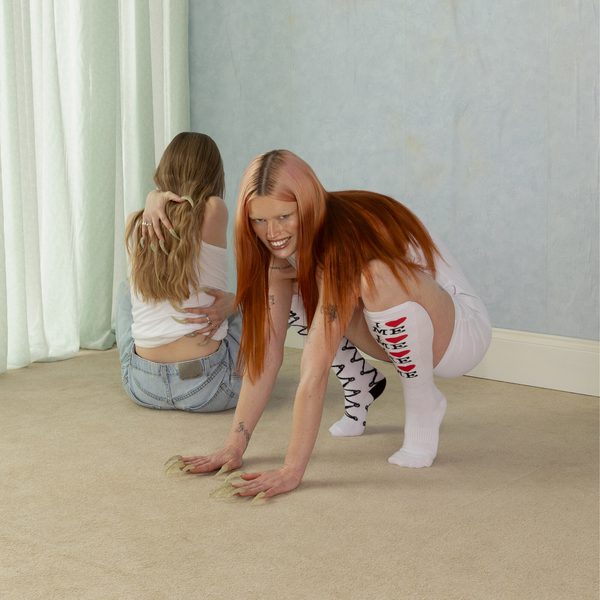
Wet Leg
moisturizer
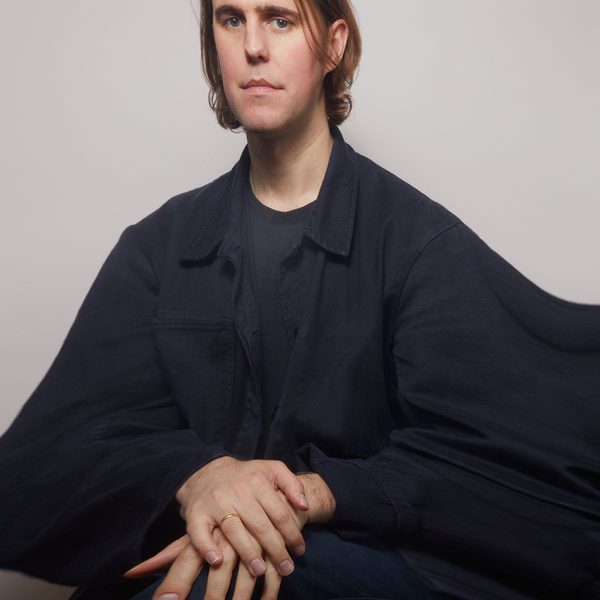
MF Tomlinson
Die To Wake Up From A Dream
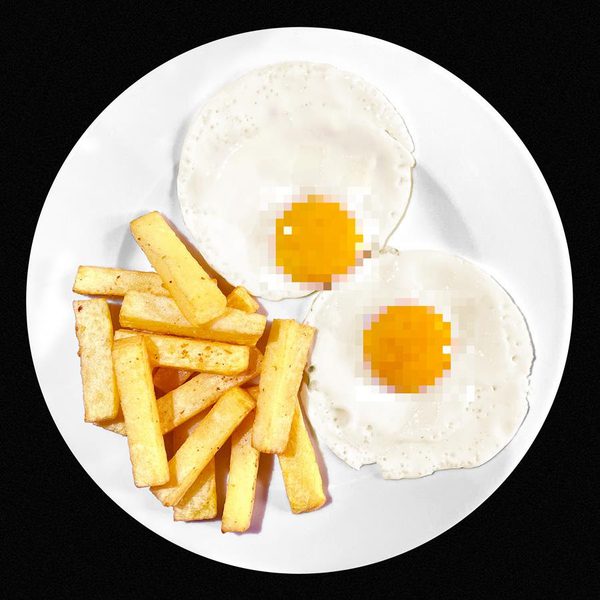
BIG SPECIAL
National Average
